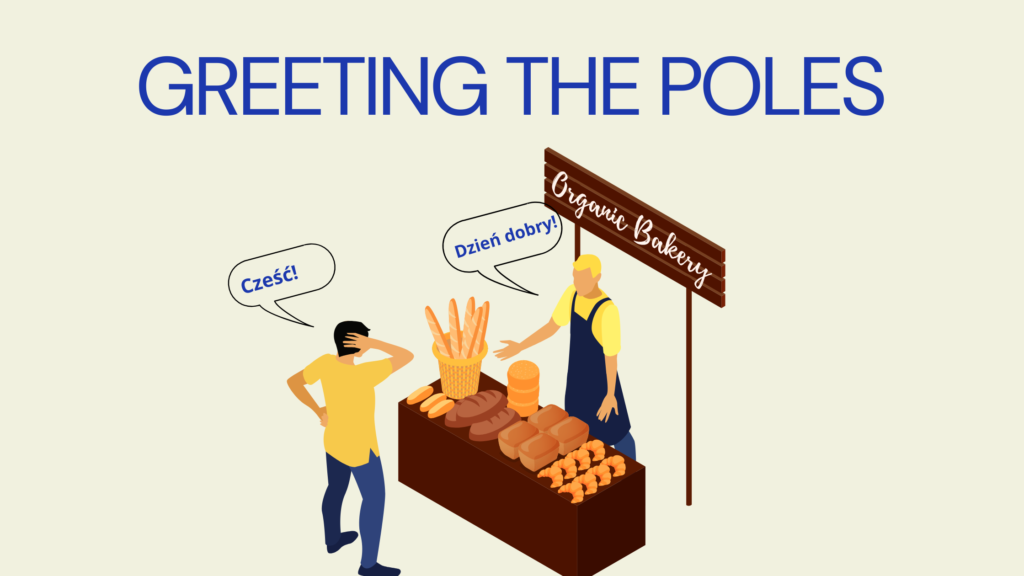
Ok, let’s do a quiz.
1. You are in a bakery and you want to say hello to the person behind the counter. What do you say?
- Cześć (Hi)
- Dzień dobry (Good morning)
And what if the shop assistant is younger than you? And what if they’re older but you know their name? You guessed it, Dzien dobry is the only right answer.
2. Next question: The day is almost done but you still want to hit the gym. What do you say to the person at the reception desk?
Cześć (Hi)
Dobry wieczór (Good evening)
And what about the people working out next to you? And your fitness instructor? Tricky, I know, but you got it: you can choose any depending on how informal the atmosphere is.
3. Last round: You’re back at work from your holidays and really want to know what your colleagues have been up to. What do you say?
Cześć (Hi)
Cześć, co słychać? (Hi, what’s up?)
And what if you go out for a walk and suddenly bump into a friend but you’re in a hurry and don’t have the time to hear what they’ve been up to?
In Polish, co słychać and jak się masz are not a standard greeting – we use them when we actually want to hear the news and it’s not rude to skip these questions. So ask them only if you have the time to listen to the answer 🙂
By the way, we rather tend to have long goodbyes: Na razie, trzymaj się, do zobaczenia! I pozdrów mamę! (Bye for now, take care, see you! And say hello to your mom!).
So how do you greet the Poles in the end? Here are some basic rules that will help you navigate social encounters when you learn spoken Polish.
- There are two formal ways of saying hello – dzień dobry & dobry wieczór – one for the bigger part of the day, one for the evening and night, although more and more people use only dzień dobry. They work when you don’t know the other person well, when the place is more business-like and when your relationship with the other person doesn’t get too deep, even though you might see each other often. Like in our example with a shop assistant and a bakery.
- There is an informal way of saying hello – cześć – which you can always use with people you know in an informal scenario. But you can also try it with people you see quite often in a more relaxed environment, even though you don’t know them very well – especially if they’re more or less your age or younger. Like at a gym in the evening, when people care less about the formal address and more about their muscles. If you’re not sure if that’s ok, use the formal option, it’s always safe.
- You might have noticed there was not a lot of „How are you?” sentences in our quiz. The Polish language has plenty of those but the Polish speakers use them mainly when they really want to know how things are with the other person. Look again at the examples from the quiz – if you’re curious, say hello and something more, like Co słychać? (What’s up?) or Jak się masz? (How are you?). If you don’t need the extra knowledge, just say hello.
Warning: this blog article expresses the opinion of the author. Of course, you can choose to do the exact opposite just for the fun of it (but be careful: some people, especially older than you, might find it confusing or slightly offensive if you use informal greetings with them). Or you can mix and match. You can play it safe or risk it to overcome the barrier of formality, it’s really up to you.
Written by Irka
